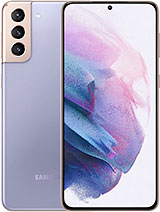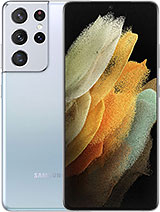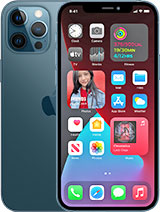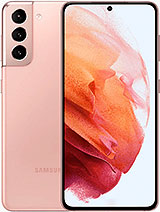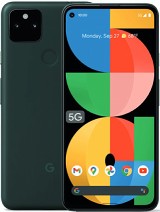Samsung Galaxy S21 Ultra vs Google Pixel 5 vs iPhone 12 Pro Max: Camera shootout! By Android Authority
The three biggest names in the game when it comes to smartphone photography. Right now are the Google Pixel 5 the iPhone 12 Pro max and the more recently released galaxy s21 ultra each device's camera setups have their own strengths. For example, google system is massively software focused, whereas apple focuses on continuity between its three lenses and Samsung is just going for pure hardware with a stacked camera setup. So what happens when you put them all together head to head, which one comes out on top? Is it the beastly 1200 ultra or the relatively affordable 700 pixels? Well, that's what we're going to find out today. This is the Samsung Galaxy s21 ultra versus Google Pixel 5 versus iPhone 12 Pro max camera shootout before we get into the video. If you want to look at the full resolution, samples check out the links in the video description to the Google Drive folder.
It's also worth mentioning that today, we're only focusing on the rear cameras. Looking at the specs quickly, you'll notice that the pixel 5 has the fewest cameras by comparison, the Samsung has the most cameras, the longer zoom, the largest main sensor. Yet there's a lot of hardware here and not even the iPhone can match that on paper, there's no competition. The Samsung takes it moving over to the samples, we'll look at several aspects: daylight, detail, HDR, low light, zoom, ultrawide and portrait modes timestamps for each will be in the video description daylight straight away. The images from Samsung are more saturated and vibrant heavy than those from apple and google.
This is down to the use of scene optimizer, which sometimes boosts these properties when it detects flowers or the sky, for example. This is most prevalent in this image of a bush where the reds and greens are really saturated in the Samsung image. The pixel 5's image by comparison is more muted and the iPhone seem to be the most washed out, though, does appear brighter than the pixel's image disabling. The scene optimizes on the Samsung brings the colors back down in line with the others. In fact, in this image of chocolate, strawberries shows saturation and exposure to be almost identical between the three with slight white balance differences.
The Google Pixel 5's image is darker than the others, as it exposes more for the brighter points. That said, the sky, in the background, is still blown out outdoors. The iPhone 12 Pro max's camera can't quite manage to expose correctly, for example, in this shot of a muddy path. It's overexposing compared to the other two, especially the pixel, which is underexposing. If anything, the iPhone captures more accurate colors than the Samsung, but the pixels just looks the most pleasing detail.
Each of these images is 12 megapixels, despite the Samsung sensor being 108 megapixels. This is because the s21 ultra sensor is binning down to 12 megapixels by default. There is a mode to go up to 108, but we're sticking with the standard photo modes here. You'd expect the Samsung's image to have considerably more detail, given its high resolution sensor, but even when zooming in on a larger computer display, the difference in quality between the final images is actually quite hard to tell when cropping in on these images of a bun, it's easier to see over sharpening artifacts from the Samsung and less so from the iPhone. The pixel 5's image by comparison looks more natural thanks to the lack of major digital sharpening.
It's the same story with the photo of the church zooming in or cropping in reveals that the pixel 5's image is the most natural looking because it's not going for that overly processed. Look the 12 pro max comes in a little more sharpened and the galaxy's image is looking the most heavily processed here. Overall, the pixel 5 does the best job at capturing detail in a natural, clean manner. Hdr technology is essential to help avoid overexposing highlights and under exposing shadows, although even the best phones have their limitations. In this extreme case, with a heavily backlit chameleon, the pixel 5's camera exposes for the shadows the most making the background rather washed out, though not too bad, given its conditions.
This is an extreme case. After all, that said, there is a lot of noise and artifacts in the shadowy corners of the image by comparison, the iPhone 12 Pro max exposes for the background which crushes the blacks in the foreground, whereas the s21 ultra balances the two with the most neutral exposure. I personally call the s21 ultra's image, the most impressive due to the camera's ability to balance the background and the foreground, or in this case the shadows and the highlights shooting directly into sunlight. This is where the 12 pro max struggles compared to the competition detail in shaded areas in front of the trees is mostly lost, as is in the fallen tree towards the middle of the image. The s21 ultra and pixel 5 are actually pretty close in terms of dynamic range and recoverable information, but you can definitely tell that Samsung's scene optimizer is boosting everything to create an unrealistic image.
Samsung does the best at balancing, highlights and shadows for best HDR results, Google's results close behind, but can end up a little darker and apples is the weakest in terms of HDR struggling to extract shadow details erring on the side of overexposure. If anything, low light, let's take a look at some low light and night mode photography. These photos of a vinyl collection with night mode turned off clearly show the s21 ultra's advantageously huge sensor, there's more detail across the board compared to the pixel 5's blurry image. The iPhone, however, is really impressive, presenting plenty of detail across the board. Despite the challenging conditions, though, the image is still quite a bit darker than the Samsung's night mode on this time, and it narrows the quality gaps between all three devices.
Quite significantly, all three are now brightly exposed and the galaxy s21 ultra's image is particularly bright and sharp. The pixels and iPhone's images appear softer, though oddly more saturated using night mode outside in the shots of these buildings, the Samsung gains a more convincing lead for one. It appears the sharpest of the three, but also there's more detail in the shadows, such as in the plants in the foreground. In the most extreme example. Yet we see the galaxy s21 ultra pull ahead thanks to its huge sensor in this shot of the back of the building the pixel and iPhone really struggle to capture a sharp image at all.
The trees in the foreground are very blurry and there's barely any detail in the sky, but the Samsung's image is miles sharper and captures the stars more. Clearly too. This is a very clear win. Overall, the Samsung's night mode is by far the most powerful zoom. It's no surprise that Samsung steals the zoom category thanks to its implementation of not one but two dedicated optical zoom cameras, one at three times and one at 10 times in this seven time shot of a digger.
The ultra's image is so sharp and crisp at least out in the shadows in these 10 time shot of the rooftops. The quality disparity is accentuated even further. The iPhones and pixels images look smeary and soft and nearly unusable by comparison. The ultra's image is very sharp, there's heaps more detail in the foreground and the background. It's not even a competition between the iPhone and the pixel.
However, the iPhone's image appears more artificially sharpened again like what we saw with the cropping in before, whereas the pixel's image looks more natural, if not as sharp ultra-wide of the three devices. The pixel 5 has the narrowest ultrawide lens, so it doesn't capture as big of a field of view as the iPhone and the Samsung in terms of dynamic range. The iPhone 12 Pro max seems to fall here compared to the s21 ultra and the pixel 5, as shown in the trees in the image of this river. In this wide-angle shot of a digger from earlier, the pixel 5 captures the most detail in the shadowy areas, while maintaining accurate and neutral colors in the sky and the grass. The Samsung's image by comparison is overly saturated and the iPhone's image appears the brightest portrait for portrait pictures, the galaxy s21 ultra and iPhone 12 Pro max have dedicated laser based depth, sensing tech to assist with focus and foreground detection combined with software-based depth.
Sensing techniques, like those we see in the pixel 5 this hardware, can help produce a very accurate looking both blur these photos of some flowers show this benefit in more challenging lighting conditions, especially compared to the other two in the lower portion of the image where they got a bit confused with the leaf stems. There are some photos of rob here which show that, despite the superior portrait performance, edge detection when it comes to fur and hair can really prove to be challenging even for the s21 ultra, the iPhone 12 Pro max's edge detection compares well with the pixel fives in this shot of rob indoors. That said, the pixel's ability to capture details in the skin tones prevails here. Samsung has taken the win in almost every category in this video, and it makes sense. The galaxy s21 hardware is superior to both the iPhone 12 Pro max and the pixel 5 setups.
On top of that, Samsung has built up its processing in areas such as the portrait mode and the HDR function to the point where it competes with Google's and apple's processing. You might prefer the individual color profiles of Samsung, apple or google, but objectively Samsung does take the win in this camera shootout and that rounds out our camera shootout. Today, guys, please do check out the original articles in the video description as written by our own Robert Briggs, whilst you're down there. Please do hit like comment, letting us know which you think came out on top and subscribe to never miss a video like this one. I've been Ryan Thomas with android authority, and I'll catch.
You later.
Source : Android Authority

